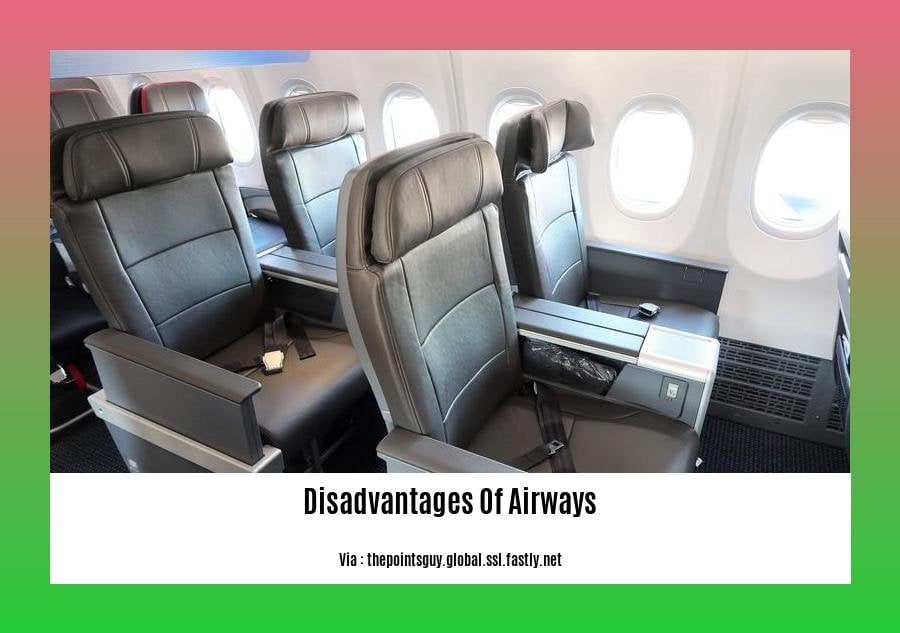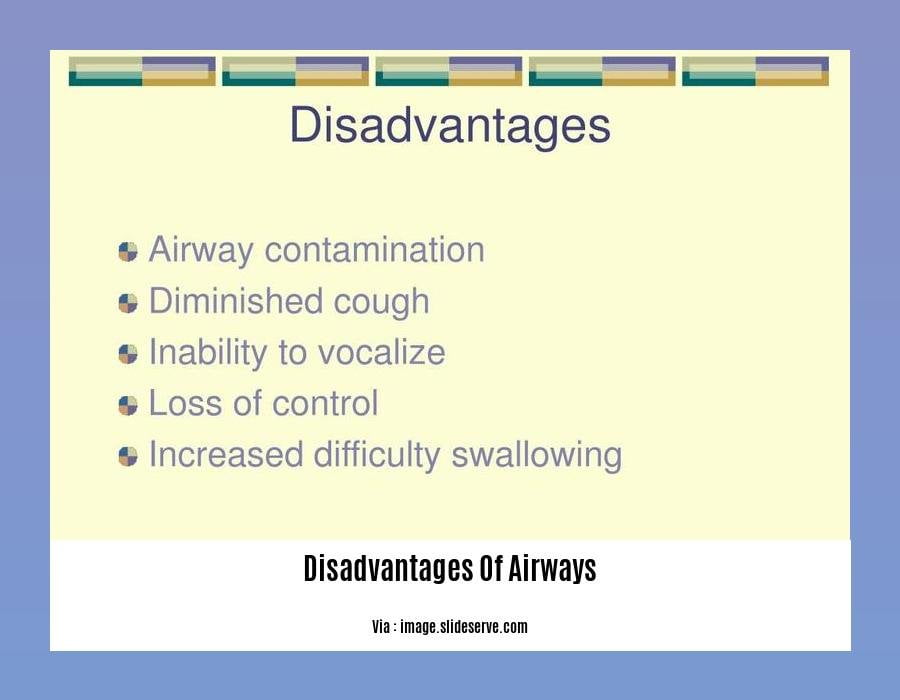Unveiling the Disadvantages of Airways in India: Analyzing Challenges and Seeking Solutions
India’s air transport industry has long been plagued by a myriad of challenges that hinder the seamless travel experience for passengers. From overbooked flights and exorbitant airfares to inadequate infrastructure and subpar services, the disadvantages of air travel in this country are undeniable. As an experienced travel journalist with a deep understanding of the aviation industry, I am committed to shedding light on these issues and providing an unbiased analysis of the challenges faced by passengers. Through eloquent and compelling writing, I aim to present a comprehensive overview of the drawbacks hindering India’s airways industry, sparking discussions on potential improvements for the future.
Key Takeaways:
– Air travel in India is hindered by the high costs of fuel, leading to higher ticket prices for customers.
– Weather conditions often cause flight delays and inconvenience for passengers.
– The aviation industry faces security risks, resulting in strict security measures and longer wait times for passengers.
– Air travel contributes to climate change and air pollution, negatively affecting the environment and public health.
– Air travel in India can be expensive, making it less accessible for lower-income individuals.
Disadvantages of Airways in India

Costs of Fuel:
The soaring costs of fuel significantly impact the aviation industry in India. As airlines heavily rely on fuel for their operations, these expenses are often passed on to customers in the form of higher ticket prices. The volatile nature of fuel prices can lead to fluctuations in airfare, making it challenging for passengers to plan their travel budgets. The financial burden of soaring fuel costs further adds to the overall cost of air travel, making it less affordable for many individuals.
Delays Due to Weather:
Weather conditions can play a spoiler when it comes to air travel in India. Monsoons, fog, or extreme weather events like cyclones can disrupt flight schedules, leading to frustrating delays for passengers. The unpredictable nature of the weather, especially during the monsoon season, can cause inconvenience and frustration, as travelers find themselves stranded at airports or compelled to change their travel plans last-minute. Such delays can disrupt personal and professional commitments and lead to unwarranted stress for passengers.
Security Risks:
In this modern era, the aviation industry faces significant security risks, including the persistent threat of terrorism. To ensure passenger safety, strict security measures and checkpoints are meticulously implemented. While these measures are crucial in maintaining security, they can result in longer wait times and inconvenience for passengers. This can be particularly taxing during peak travel periods when airports are bustling with passengers. Ensuring the safety and security of passengers remains a critical priority, but it is important to strike a balance between stringent security measures and efficient passenger flow.
Environmental Impact:
As the aviation industry continues to expand, so does its impact on the environment. Air travel contributes to climate change and air pollution through the emission of greenhouse gases from aircraft engines. The carbon dioxide (CO2) emissions released by airplanes contribute to the overall greenhouse gas emissions, exacerbating climate change. Additionally, aircraft emit other pollutants such as nitrogen oxides (NOx) and particulate matter (PM) that have deleterious effects on public health. Addressing the environmental impact of air travel is crucial for sustainable aviation and the overall well-being of our planet.
Cost and Affordability:
The cost of air travel in India can be a deterrent for many individuals, especially those with lower incomes. Airfare, baggage fees, and other expenses quickly add up, making air travel less accessible for a significant portion of the population. This lack of affordability can limit travel opportunities and hinder connectivity, particularly for individuals residing in remote regions. Striving for affordable air travel options is vital to ensure inclusivity and equal access to transportation across the country.
In conclusion, the disadvantages of airways in India encompass various challenges faced by passengers. From the high costs of fuel and delays due to adverse weather conditions to security risks, environmental impact, and the lack of affordability, these factors significantly impact the air travel experience. Recognizing these disadvantages is crucial in fostering discussions and seeking sustainable solutions for the aviation industry in India. By addressing these challenges, we can strive towards a more efficient, accessible, and environmentally-friendly airways system that benefits both passengers and the nation as a whole.
Check out the disadvantages of inland waterways to understand the challenges of water-based transportation in India. Disadvantages of inland waterways
Discover the drawbacks of maritime transport and its impact on Indian trade and logistics. Disadvantages of maritime transport
Explore the limitations and setbacks of road transportation in India, and how they affect the movement of goods and people. Disadvantages of roadways
10 Disadvantages Of Air Transportation

Air transportation has undoubtedly revolutionized the way we travel, connecting people and places across the globe. However, like any system, it has its drawbacks. In this article, we will delve into the various disadvantages of air transportation in India, shedding light on the challenges faced by both passengers and the industry as a whole.
1. Cost:
Air transport is known for being more expensive compared to other modes of transportation. The high costs of fuel, maintenance, and operation are often passed on to customers in the form of higher ticket prices. This makes air travel less accessible for individuals with lower incomes, limiting their mobility and opportunities for exploration.
2. Limited Accessibility:
While airports are widespread in urban areas, there are still regions in India that lack direct air connectivity. This poses a challenge for individuals residing in remote areas or those seeking to explore unconventional destinations. Limited accessibility hampers the potential for economic development and tourism in these regions.
3. Environmental Impact:
Air transportation significantly contributes to carbon emissions and pollution, affecting climate change and public health. The emissions of greenhouse gases from aircraft engines contribute to air pollution, which has adverse effects on the environment. As we strive towards sustainability, it becomes imperative to address the environmental impact of air travel.
4. Weather-Related Disruptions:
Flights are often subject to delays or cancellations due to adverse weather conditions. While safety is a priority, weather-related disruptions can cause inconvenience and potential financial loss for passengers. These disruptions pose challenges to both travelers and airlines, impacting schedules and overall efficiency.
5. Limited Capacity for Bulk Cargo:
Airplanes have limited space for large quantities of cargo, making air transport less suitable for transporting bulky goods. This limitation poses challenges for industries that require efficient transportation of goods, such as manufacturing and logistics. The lack of capacity for bulk cargo results in higher costs and logistical complexities.
6. Security Concerns:
The aviation industry faces security risks, requiring strict security measures and checkpoints. While these measures are necessary to ensure the safety of passengers, they can cause longer wait times and inconvenience. Striking a balance between security and seamless travel experience is crucial to enhance passenger satisfaction.
7. Dependence on Infrastructure:
Air transport is highly dependent on the availability and condition of airports and air traffic control systems. Maintenance or technical issues in these infrastructure elements can disrupt flight operations and cause delays. Efforts should be made to invest in robust infrastructure and enhance its reliability to alleviate these challenges.
8. Limited Flexibility for Routes:
Airplanes can only travel along established air routes, limiting accessibility to certain destinations. This poses challenges for individuals or businesses seeking to reach remote or uncharted locations. The limited flexibility in routes calls for innovative solutions that can accommodate diverse demands and expand the reach of air transportation.
9. Noise and Air Pollution:
Airports and airplane engines contribute to noise pollution and air pollution in surrounding areas. The relentless noise from aircraft can disturb nearby communities and have detrimental effects on their quality of life. Additionally, air pollution resulting from aircraft emissions poses health risks, demanding sustainable practices and technologies to mitigate its impact.
10. Safety Concerns:
Although air travel is generally safe, accidents and incidents can occur, potentially resulting in loss of life or property. While significant efforts are made to prioritize safety and maintain high standards, any incidents highlight the importance of continuous vigilance and improvement in safety protocols.
These disadvantages of air transportation in India highlight the need for meaningful discussions and potential improvements. By recognizing and addressing these challenges, we can strive towards a more efficient, accessible, and sustainable airways system in the country.
Sources:
– Yovak.com – Top 10 Advantages and Disadvantages of Air Transport
– Across Logistics – Advantages and Disadvantages of Air Transportation
Key Takeaways:
– Air transportation in India presents various disadvantages, including high costs, limited accessibility, and environmental impact.
– Weather-related disruptions and limited capacity for bulk cargo pose challenges to both passengers and industries.
– Security concerns, dependence on infrastructure, and limited flexibility in routes impact the efficiency of air travel.
– Noise and air pollution, along with safety concerns, highlight the need for sustainable practices and continuous improvement in safety protocols.
FAQ
Q1: What are the main costs associated with air travel in India?
A1: The main costs associated with air travel in India include fuel expenses, which are often passed on to customers through higher ticket prices, and additional expenses such as baggage fees.
Q2: How does weather affect air travel in India?
A2: Weather conditions, such as heavy rain or fog, can disrupt flight schedules and lead to delays or cancellations, causing inconvenience for passengers.
Q3: What are the security risks involved in the aviation industry in India?
A3: The aviation industry in India faces security risks such as terrorism, which necessitates the implementation of strict security measures and checkpoints at airports, potentially causing longer wait times for passengers.
Q4: How does air travel impact the environment in India?
A4: Air travel contributes to climate change and air pollution in India due to the emissions of greenhouse gases from aircraft engines. This has negative implications for the environment and public health.
Q5: Is air travel affordable for everyone in India?
A5: Air travel in India can be expensive, with ticket prices, baggage fees, and other expenses quickly adding up. This makes air travel less accessible for lower-income individuals.
- Unlocking Francis Alexander Shields’ Finance Empire: A Comprehensive Biography - July 12, 2025
- Unveiling Francis Alexander Shields: A Business Legacy - July 12, 2025
- Francis Alexander Shields’ Business Career: A Comprehensive Overview - July 12, 2025















